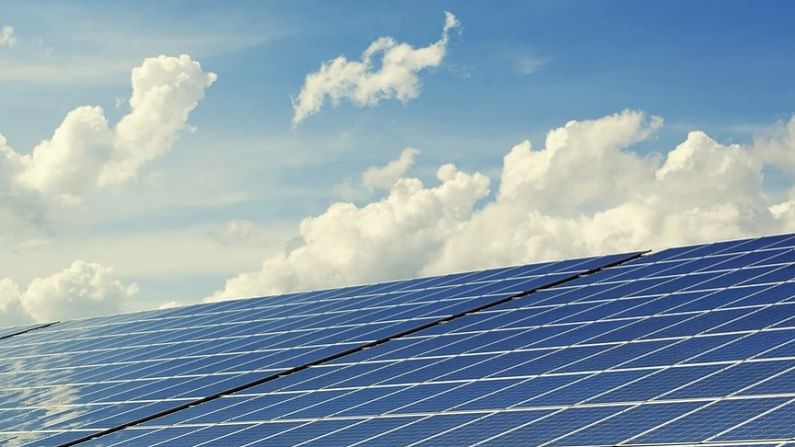Solar sector shines bright in India, provides massive opportunity for growth
Solar power is a non-polluting clean energy source which does not lead to production of any hazardous materials

India is a rapidly developing nation, growing at an unprecedented pace. With such strides in growth, the country’s energy demands have also been consistently rising. As of 2019, India emerged as the third largest power consumer, globally, after China and the United States of America.
In 2015, during COP21 India led the way by declaring ambitious government commitments for a New India powered by clean sources of energy, which includes 33-35% reduction in the emissions intensity below 2005 levels and increase in the share of non-fossil fuels in the total installed capacity to 40%, by the year 2030.
India has also made strides in meeting the various Sustainable Development Goals (SDG) 7 targets. The SDG 7 which was introduced in 2015, aims to ‘ensure access to affordable, reliable, sustainable and modern energy for all’.
Keeping in line with these goals, India has undertaken one of the largest programmes to provide universal access to energy and clean cooking gas, foster the generation and deployment of renewable energy and increase its consumption share in the economy, and double the rate of energy efficiency improvements.
By the end of 2019, India had already more than doubled its renewable energy deployment and by 2030, it is expected to account for 55% of the nation’s total installed power capacity. While traditional subsectors such as wind, solar and hydro are more popularly accessed, the nation is also exploring newer technologies such as hydrogen, wave energy, geo-thermal energy, offshore wind etc in order to utilise India’s abundant resources to ramp up production of non-conventional energy.
Currently, India has one of largest expansion plans for renewable energy globally –450 GW of renewable energy by 2030 and has the 5th largest installed capacity and globally the fourth-largest for wind and fifth-largest for solar. India’s solar energy production has increased by more than 11 times in the five years from 2.6 Giga Watt (GW) in March 2014 to 30 GW in July 2019. This bears testimony to the strength and potential of the solar sector in India.
Solar power is a non-polluting clean energy source which does not lead to production of any hazardous materials. Solar energy is produced through photo voltaic cells and can be installed both as a large-scale project as well as a small-scale rooftop project. India’s geo climatic conditions make it highly favorable to harness energy via solar power. Most parts of the country experience close to 300 sunny days with incidence of 5,000 trillion Kilo Watt Hour (kWh) per year and most parts receive 4-7 kWh per sq. m per day. Owing to economies of scale India has recorded a low tariff of INR 1.99/ kWh for solar in Gujarat.
Government impetus
Renewable energy projects are classified under ‘white category’ thereby leading to easier and faster environment clearances and 100% FDI is allowed in the sector under automatic route. Inter-State Transmission charges for solar and wind energy have also been waived and the cess on coal, lignite and peat has been doubled to INR 400/ton. Additionally, to further boost the renewable energy production, the government has mandated provision of rooftop solar and 10% generation of energy through renewable energy sources for the development of smart cities in India.
National Solar Mission
Inaugurated in January 2010, the Jawaharlal Nehru National Solar Mission (JNNSM), or the National Solar Mission, is an initiative of the government of India and state governments to promote solar power in India. JNNSM has undergone two revisions and boasts of 100 GW solar PV target by 2022. USD 750 Million (Mn) has been approved for grid connected rooftop systems under the Mission.
The Ministry of New and Renewable Energy (MNRE) has drawn a scheme to set up solar parks across various states in India. The parks will house projects with a capacity of over 500MW. The Scheme proposes to provide financial support by Government of India to establish solar parks with an aim to facilitate creation of infrastructure necessary for setting up new solar power projects in terms of allocation of land, transmission and evacuation lines, access roads, availability of water and others, in a focused manner.
Around 39 parks of 23 GW already have already been approved under the scheme as of December 2019. The scheme’s target has been doubled from its initial target of 20 GW to 40 GW.
Following India’s ambitious renewable energy targets and the clarion call for “Aatmanirbhar Bharat” and ‘Vocal for Local’ announced by Prime Minister Narendra Modi, the government started on its mission to strengthen India’s domestic solar manufacturing. In an attempt to localize supply chains and boost exports, the government came up with a slew of reforms:
Launched in 2019, the Pradhan Mantri Kisan Suraksha Abhiyan Utthan Mahabhiyan (Kusum) Yojana was launched by the Government of India to aid farmers income. The scheme launched by the Ministry of New and Renewable Energy (MNRE) focused on setting up solar pumps and other new power plants across the country.
The Ministry of New and Renewable Energy (MNRE) launched the Atal Jyoti Yojana (AJAY) to provide lighting to dark regions by establishing solar street lights.
Tariffs on solar power reduced by over 75% through the use of the plug and play model.
In order to strengthen the efforts of the Indian government, the Indian Railways announced that 960 railways stations have solar installations in place to meet their power requirements. These solar systems are part of the Railways’ endeavour to expand the usage of renewable energy.
India has a strong resolve and is swiftly moving towards cleaner sources of energy. Owing to India’s favourable conditions and the government’s support in the sector, the solar sector provides massive opportunity for growth and investment and is indeed shining in India!
(The writer is Researcher, Strategic Investment Research Unit, Invest India. Views expressed are personal)

